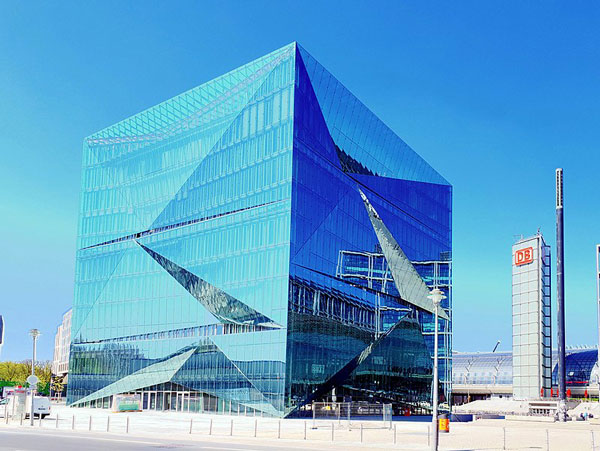Glass curtain walls and large windows have been popular in building design for decades.
In addition to esthetic considerations, there are other important benefits. Large panels of glass bring natural light into interior spaces, reducing energy demands for artificial lighting. Offering a view of the outside world also results in to the health and well-being of occupants.
Glass is under attack these days. Allegations of high CO2 emissions associated with glass production and the supposed low operational carbon performance of large window units are bringing criticisms concerning the extensive use of glass which some say overshadow the benefits.
Environmental commentator Lloyd Alter has been particularly critical about the prolific use of glass. He has architects of “laziness” for “simply outsourcing the design to a curtain wall supplier,” and has glass curtain wall, “an esthetic as well as a thermal crime.”
Provocative declarations of “thermal crime” require examination to determine fairness and accuracy. Although glass may be overused on building exteriors in some cases, modern glazing continues to evolve, particularly as triple-glazing becomes available at more reasonable costs.
Glass manufacturing and industry recycling efforts were outlined in last week’s Climate and Construction. However, the challenge remains to calculate the level of embodied carbon in a finished glass component when so few product-specific EPDs exist.
Although requiring high kiln temperatures, glass manufacturing processes actually represent low levels of CO2 emissions compared to other building materials. For credible figures, we turn to France.

According to Finance ClimAct, an organization providing tools to integrate climate issues into investment decisions, the GHG emissions from the represent 3.0 per cent of the country’s industrial emissions. Within that, the production of flat glass used for both the building and automotive sectors is only 16 per cent, or 0.48 per cent overall. In contrast, represents 22 per cent of industrial GHGs, and 12.5 per cent.
In terms of operational carbon, there have been improvements in frame design, and double or triple glazing in window units. Sophisticated engineering now goes into top quality window units to provide thermal breaks and air and water tightness, whether unit framing is wood, PVC, fibreglass, aluminum or steel.
Advanced window technology is not always considered when comparative studies of wall structures are conducted. , undertaken by Ha/f Research Studio at the John H. Daniels Faculty of Architecture, Landscape and Design at the University of Toronto, is an example.
The study sets out to, “balance operational carbon and embodied carbon in building design through a Whole Life Carbon (WLC) perspective” by measuring and comparing the operational and embodied carbon differences between four individual wall structures using different building materials and varying window-to-wall ratios.
Problematic is the introduction of so many variables into each wall sample. The cross-sections and window units for each appear also to be unsophisticated in their design.
In terms of operational carbon analysis, the study intentionally avoids “sophisticated modelling of occupancy, internal gains, thermal mass, airtightness, solar orientation, shading devices and glazing properties.”
Many of these directly affect the study’s findings as they relate to windows.
Kelly Doran, director of the Ha/f Research Studio, shared a portion of another study with the Daily Commercial News that analyzes the electricity grid intensity in North American cities with different climates, versus the cost premium and payback periods for double and triple glazed windows.
He concludes, “reducing window-to-wall ratios and shedding our fascination with floor-to-ceiling would do wonders to cost, carbon, and performance.”
However, it is not clear whether the study considers the latest advances in double or triple glazed window technology and coatings. Conclusions are also based on long-term predictions concerning the future decarbonization of specific urban grids that currently rely on fossil fuels.
Decisions to reduce window-to-wall ratios in commercial buildings must be based on properly conducted, objective analysis of window unit design versus solid wall structures, as . Otherwise, shrinking the number of windows, or installing multiple small ones instead of large ones, may be ill-founded.
Next week: A look at how glass and window technologies are evolving to meet today’s complex carbon demands.
John Bleasby is a Coldwater, Ont.-based freelance writer. Send comments and Climate and Construction column ideas to editor@dailycommercialnews.com.









A company called LiteZone in Edmonton, Alberta has developed a new kind of insulating glass unit technology that allows for very large windows to have as high as R17 insulating values with a 100 year life span. I think the kind of change we need to see to battle the climate crises requires new innovation and new ways of thinking.